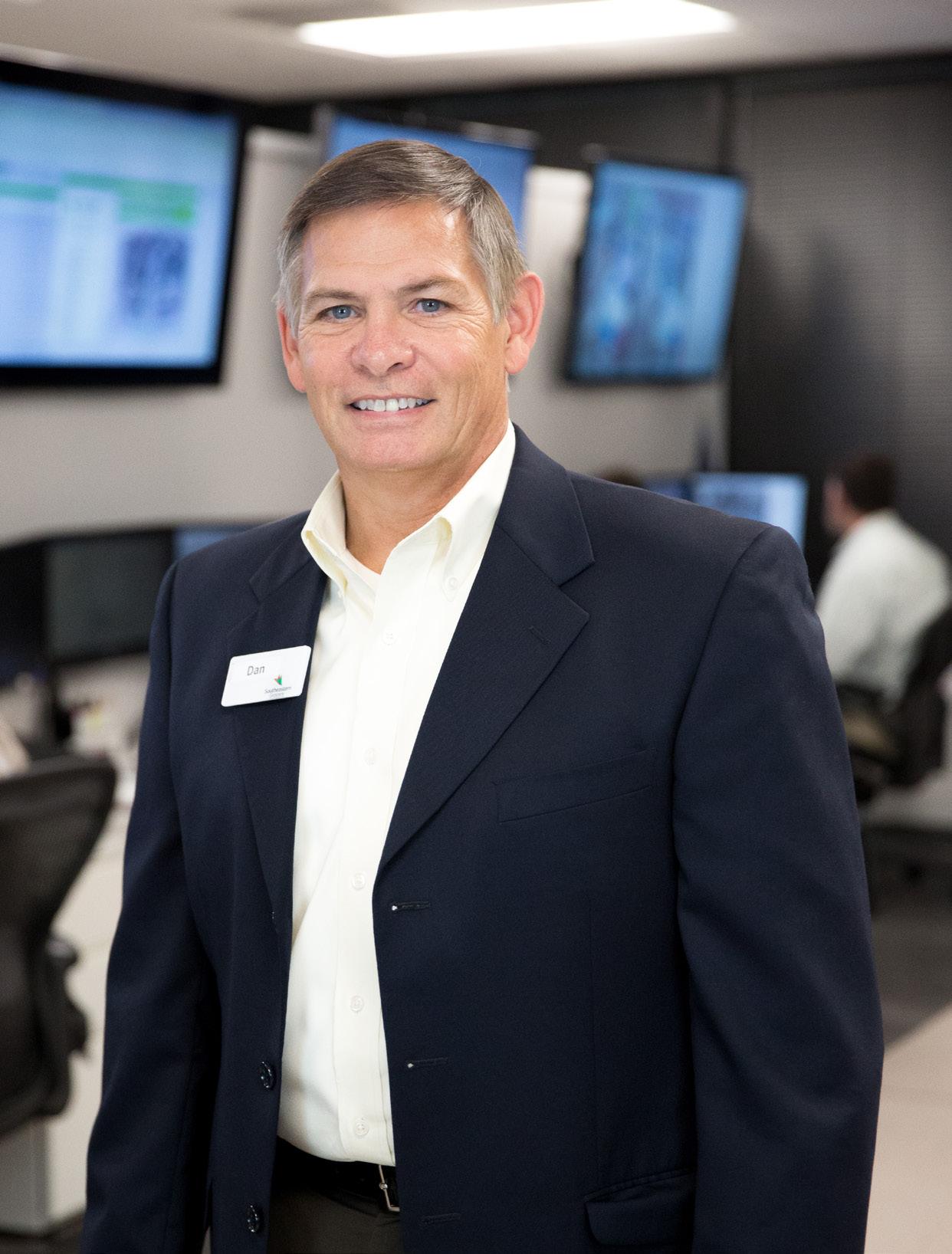
32 minute read
PERSPECTIVES
A Culture of Innovation
Building on the Insights and Ideas of Those Willing to Think Outside the Box
Savvy leaders shape the cultures of their departments to drive innovation. They know that culture—the values, norms, unconscious messages, and subtle behaviors of leaders and employees—will either enhance or limit performance. This type of creative thinking can be encouraged and rewarded, or discouraged. What’s important is that we take the steps to get it right.
It’s the power of open minds that often leads to the greatest and most productive results. In fact, we need not look any further than our own loss prevention community for answers. Whether originating with our peers across the industry, our solution provider partners, or from within our own teams, the past, present, and future of loss prevention will be built on the insights and ideas of those willing to step up and think outside the box.
So how do you develop a culture of innovation? For perspective and input we turned to executive leadership from three leading solution providers to discuss their thoughts on the subject.
What do you see as the greatest motivation to encourage the loss prevention industry to be more innovative?
HOANG: The retail industry is going through some dramatic changes. Technology has presented consumers with more options on how and where they can purchase products and services than ever before. Competition is no longer restricted to the vertical or market arena that each individual retailer has been competing in. In an effort to maintain market share and increase sales, retailers are trying new ideas and redirecting efforts toward customer-facing initiatives. This can leave AP with less money to invest.
Today’s AP leaders are tasked with being more productive while using fewer resources. They will need to find ways to add value throughout their entire companies in order to stay relevant and avoid significant budget cuts, taking on more responsibility while embedding themselves in areas that may not traditionally be associated with asset protection. Simply put, doing the same things AP has always done won’t be enough. With dwindling resources and refined investment strategies, being creative and driving innovation will become the norm.
SELL: Some $50 billion is still stolen or lost in retail annually, which is an increase from previous years. This is the market reality that should automatically motivate us. Until this number is much closer to zero, we will need better ideas and solutions. Not trying new things is not an option, even in a mature industry like ours. In his book Only the Paranoid Survive, Andy Grove of Intel said twenty years ago that “sooner or later, something fundamental in your business world will change.” In retail, we see change almost daily that requires new thinking.
DUNN: The retail industry may be one of the fastest-changing industries in the US. Siloed technology solutions are a thing of the past. Amazon has redefined the nature of competition in retail around technology and data, and every retailer needs a response. The only way to navigate a path through this environment is to be constantly testing, learning, and innovating.
We see some companies where innovation thrives and others where it’s nowhere to be found. As a solution provider, what are the conditions that make disruptive innovation most likely and productive?
SELL: Innovation starts with people. The naturally curious tend to feel that the more things stay the same, the more it’s like running in sand. So first you need to have people with the right mindset. Then you need to build a structure that allows trial and error. This means having meaningful motivators to reward the turning over of rocks and the challenging of status quo. It also means accepting a certain failure rate and not punishing innovators who are trying to produce something new.
It doesn’t hurt to have a process that fosters regular attempts to innovate either, such as allowing employees a certain number of hours per week to work on projects of their own choosing or having cross-functional teams that meet regularly to brainstorm. Ideas don’t come from the genie in a bottle; they are almost always the result of a multistep process that requires time and discipline.
DUNN: The biggest factor that distinguishes innovative retailers from those that aren’t are the quality of “change agents” within the organization. Change agents are able to see a better future, articulate that future in clear and convincing ways, and gather the resources to make that future the organization’s
Randy Dunn Sales Director, America’s, Inventory Intelligence, Tyco Retail Solutions
Vy Hoang Executive Vice President, Sales and Marketing, i3 International
Steve Sell Vice President, Global Sales and Marketing, CONTROLTEK USA
By Jacque Brittain, LPC
Brittain is editorial director for LP Magazine. Prior to joining the magazine, he was director of learning design and certification for Learn It Solutions, where he helped coordinate and write the online coursework for the Loss Prevention Foundation’s LPC and LPQ certifications. Earlier in his career, Brittain was vice president of operations for one of the largest executive recruiting firms in the LP industry. He can be reached at JacB@LPportal.com.
continued from page 24 new reality. Change agents have deep respect for the organizations they work for but are willing to break the rules in order to help create a better future.
HOANG: Courage and necessity drive innovation. Sometimes AP leaders are inspired to think differently in order to create solutions and solve problems. However, it takes a bit of courage to try a new way of doing things, especially if there is any chance of failure. At the end of the day, it’s about the company’s leadership and the culture that they create.
Fear and lack of empowerment are probably two of the biggest innovation killers in retail today. As a solution provider, I look for leaders that want to be different and are not satisfied with the status quo. They not only want the best out of themselves but also the best out of their teams. These particular individuals look at innovation as a key performance indicator used to differentiate themselves from the rest of the pack.
How can we help loss prevention leaders think in more innovative ways?
DUNN: LP leaders of the future will need to be able to demonstrate not only how their strategies and programs help the organization “lose less” but also how it helps them “sell more.” As retailers work to make their interactions with shoppers more “frictionless,” the LP leaders of the future will need to know how to enable that without forfeiting all of their LP controls.
HOANG: As a technology company, we pay particular attention to what our clients need rather than sell them what we have. Sometimes this requires us to innovate new ideas and technology together. I would also ask AP leaders to place real meaning behind each and every initiative. In other words, stop doing what has always been done simply because it has always been done. AP leaders sometimes fall into this pattern, and the fact is that some shrink reduction techniques are no longer effective or applicable in today’s retail environment. AP leaders should strive to implement programs and technology that actually show a measurable impact and desired result rather than using technology they are comfortable with.
I personally surround myself with problem-solvers who do not necessarily think like me. I recommend that leaders go outside of their businesses and learn from others. Recently I went to China for two weeks to learn about how retail has changed there. I learned that China is going through similar changes in their retail segment. I saw an eighty-year-old merchant on the street selling baked potatoes, but instead of taking cash he pulled out his phone to settle the payment with his customer using mobile payment. I saw the effects of financial technologies on brick-and-mortar stores. These experiences have given me a greater understanding of what the convergence of technology and retail could be like here. I encourage AP leaders to look outside their industry, outside their countries, and give themselves the ability to wonder and dream of the possibilities.
SELL: Since I work for a security technology company, the starting point I’d suggest is to engage with your solutions providers and ask some tough questions. The “what if” questions should be discussed separately from the “what we get from you today” conversation and can lead to a strategic breakthrough.
Second, share more insight and then define what innovation really means and how it will be measured. Like in a doctor-patient relationship, nontransparency hampers the treatment of the problem. Innovation is a mutual dialogue, not always a surprise delivered to the doorstep by somebody.
What do you consider to be the greatest innovation killers in the business?
HOANG: Fears of failure and change are the greatest innovation killers. Innovation takes courage! I recently asked a group of colleagues if they like change; most raised their hands. I then asked if they would be willing to move out of their office for a month, and most said no. Change is very difficult for most of us, and to some, impossible. If you want innovation to thrive within your business, you must first look at yourself and see if you are willing to change. Then you must convince others why they need to change. This will take some time, but once the group is convinced, you will be able to start the transformation. You may face many challenges along the way. But keep focus, and you will get there.
SELL: Not setting aside enough time and money for it. All businesses are “busy.” The focus on short-term goals seems to gobble up the resources for innovation that would benefit the long term. I recall Mike Schroepfer, Facebook’s chief technology officer, once saying, “I have one hand in the day-to-day and one in the future.” I think he was saying that innovation can’t be a part-time hobby. It must be part of the culture where feeling “noninnovative” is like feeling not profitable. Innovation should be in schedules and budgets, and it has to genuinely become a part of the company strategy.
DUNN: The greatest innovation killer is past success. One of the hardest things in business is to change before the company is broken. Books have been written about the “innovator’s dilemma” (Clayton Christensen) and why innovation in successful companies is so challenging.
What traits do you look for in an innovator?
DUNN: The most important traits for an innovator are “wonder” and “perseverance.” An innovator must be deeply curious about the world around and capable of forming new and testable hypotheses. An innovator also needs to be able to overcome all of the obstacles that will try and prevent a change from the status quo. Innovation is not for the faint of heart, but it is some of the most satisfying work a person can do. Knowing that you’re making a difference and helping create a better future for your organization is deeply rewarding.
HOANG: The traits I look for in people who could be great innovators are someone who is a problem solver, who complements my weaknesses, who is not satisfied with the status quo, who is striving for excellence, who exhibits strong leadership skills, and people who want to win.
SELL: You simply can’t be afraid to be wrong. I have a sign in my office that says, “If you’re not prepared to be wrong, you’ll never come up with anything original.” Being wrong in a thoughtful, prepared manner as we advance original thinking needs to be accepted, rather than expecting perfection in every initiative. After all, sometimes we land on the moon after we make mistakes, analyze them, and learn from them.
FEATURE
TAKING A DATA-CENTRIC ROLE TO ADD VALUE TO YOUR COMPANY
AN INSIGHTFUL DISCUSSION WITH DAN FAKETTY OF SOUTHEASTERN GROCERS
EDITOR’S NOTE: Dan Faketty is vice president of asset protection for Southeastern Grocers based in Jacksonville, Florida. Prior to moving into a leadership role with Winn-Dixie in 2005, he was vice president of loss prevention at Harris Teeter, director of loss control for Super Kmart Centers, and regional LP manager at Shopko. Faketty is the current chair of the National Retail Federation loss prevention council where he has played an active role for the past fifteen years.
EDITOR: Thank you, Dan, for speaking with us again. We last interviewed you in 2003 when you were head of LP at Harris Teeter. Fifteen years later you are with Southeastern Grocers. Tell our readers about your current company and its various brands.
FAKETTY: Thanks, Jim. Southeastern Grocers currently operates under four different banners. There’s Winn-Dixie, which is the largest. We also have the BI-LO, Harveys, and a new banner that we launched in June of 2016 called Fresco y Más, which means “fresh and more.” Combined, we have 580 locations operating in seven Southeastern states.
EDITOR: And as the vice president of asset protection, what are your current responsibilities?
FAKETTY: In some respects, I have the traditional loss prevention responsibilities that center on shrink reduction, but the organization has also entrusted us with additional responsibilities that I like to call nontraditional roles. For example, we oversee all corporate safety programs, including accident prevention and investigations. The audit program also reports into asset protection, and we have a field team auditing stores and reporting out daily on results. Additionally, we’re responsible for pharmacy oversight, which involves working closely with our pharmacy business partners to develop and implement targeted controls to ensure we’re in regulatory compliance in order to prevent theft and diversion. This includes using powerful analytic tools that enable my team to monitor the shipping and dispensing activity for “problematic” drugs, such as opioids, and respond accordingly if we see overdispensing opportunities in stores or doctors who may be overprescribing.
Asset protection also has recovery services, which predominately deals with the collection of bad checks and employee restitution. My peers often chuckle when I mention that and ask, “Who writes checks these days?” I can assure you they are alive and well in the supermarket industry. Rounding out the AP areas of responsibility are food safety and business continuity.
When you look at things holistically, I think you’d agree that many are nontraditional roles from a loss prevention perspective. Ultimately, my primary responsibility is building the team, developing talent, working cross functionally with our business partners, and then developing and implementing strategies to help make us successful.
EDITOR: All those areas have financial metric components that would help you measure where you’re successful and what you need to improve upon. Is that correct?
FAKETTY: I would agree. In fact, it’s interesting because most of these responsibilities were not those we went after. Over time, it was key leaders in the executive suite that came to us and asked if we could help drive measurable results by assisting in the development of proactive programs designed to either enhance profitability in the business, minimize loss, minimize brand damage, or all three.
EDITOR: While you’ve picked up responsibilities that many of your peers in food retailing, and many in traditional retailing, do not have. What are some of the challenges that are specific to your company or food retailing in general?
FAKETTY: The competitive nature of the grocery industry presses our organization to continuously look for ways to work
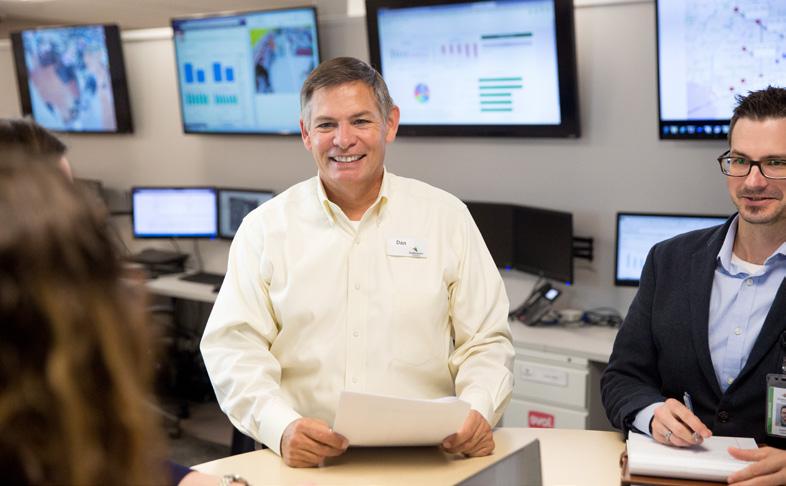
We take the time and effort when designing our systems to ensure they interface with each other. We’ve made choices to purchase single-source equipment, use the same integrators to install it, and utilize the same software, where possible, to run it. All to be consistent across the enterprise and make things easy for stores and our AP team.
more efficiently. As this happens, we’ve been asked to take on additional roles yet remain resource neutral. From a department standpoint, this has been one of the biggest challenges. With that said, we’re continuously looking to do more here if we can add value to the organization.
Ultimately, our department is measured on each of the additional responsibilities we have inherited, which suits us just fine as we pride ourselves on being results driven. If we take on an additional role, it’s not uncommon for us to ask for resources. Sometimes it’s granted, sometimes it’s not, but we find ways to shift or reallocate resources, within the department, to get the job done—continually measuring the business impact financially.
EDITOR: If you think back ten or twenty years ago, LP was basically concentrated on shoplifting and dishonest employee investigations. How would you describe the changes that have evolved to today?
FAKETTY: In my opinion there’s still a strong emphasis on internal, external, and vendor theft. We’re active in those traditional roles here but you can’t ignore other problems that may be negatively impacting the business. What we’ve found is that as a department we can actually do more. I think it’s one of the reasons the organization has entrusted our team to take on the nontraditional roles we’ve been given.
I remember when our organization was purchased by BI-LO. When I first met the chief financial officer from BI-LO, who is now the CFO here, I spent two hours walking him through the asset protection program. When I began speaking about safety and the role we played in developing new programs, the work in defending accident claims, and others, he asked, “Why do you have safety; it’s in operations where I come from.” I said, “Because we have a field staff that can do more than just the traditional roles of theft detection.” At the time we were active in safety for about a year and a half and were making significant progress in accident reduction and cost savings, all of which were measurable. Safe to say he was impressed with not just safety but the other nontraditional roles we had in the department, as I was eventually identified to lead the asset protection team in the new company now called Southeastern Grocers.
In the past, safety was managed by operations in Winn-Dixie, but since we had district asset protection managers in the field, I felt strongly we could help improve results. Considering these asset protection district managers were in stores every day, it only made sense that it should fall under my department. I also ran the corporate safety program in a previous life, and when you see the litigious exposure in supermarkets, especially slip-and-fall accidents and costs associated with workers’ compensation injuries, it made sense to be in my purview. Our CFO agreed wholeheartedly.
Please recognize I don’t want to downplay the traditional roles and approaches to asset protection, but I think if you look at what has occurred in retail over the last fifteen years, you’ve seen better technology, systems, and effort go into measuring shrink. Even here we have the ability to measure what’s missing by category, subcategory, even on the item level in our stores, and we’ve had that ability for seven years now. Based off the data, we can better understand that theft is not the only thing driving shrink. In fact, we have identified process failures as the leading driver.
Put another way, with the data we have available today we can be laser focused on identifying what is driving shrink much more accurately than ever before. By using this same data we can also make smarter merchandising decisions on not just what products are driving shrink but more importantly what isn’t selling in stores. As you know, nothing good can happen to product that sits on store shelves or in the backroom. This also alleviates the need in having so many bodies in the field performing the traditional role of thief catcher, and instead we choose to reallocate those same resources to support other parts of the business. The traditional investigative role is important and will always need to be addressed, but you can now be more focused than ever before in identifying the root cause of shrink and allocating resources accordingly, whatever that is.

EDITOR: What about the impact of organized retail crime? In your opinion, has it changed over time?
FAKETTY: It’s still a serious problem. But as stated, using data, you can identify and truly recognize ORC much more quickly than you could ten or fifteen years ago. Our data-driven approach gives us the ability to immediately see where incidents are occurring, allowing us to address them in real time.
Ironically if you look at external theft in general, you still have amateurs or opportunist. You train your people on how to deter that type of theft. There’s also the local booster—the individual coming into a store and taking all your deodorant, for example, and selling them on a street corner. You then have the more hardcore organized retail crime groups. How you deal with
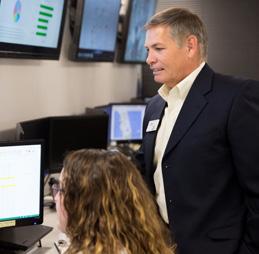
each one of those three classifications is completely different. I am disappointed that our industry tends to focus on the ORC problem only, when the other two, based off frequency, may be driving as much or more of the problem.
Don’t get me wrong; resources must be allocated to deal with the ORC thief. In fact, we’re addressing a problem now as we do this interview. Our field teams investigate and resolve ORC problems as they come up, but from a resource allocation standpoint, we also have our field teams involved in safety, business continuity, audit, food safety, and all the other responsibilities we spoke about.
One thing I will say is we throw every available resource at ORC problems involving violent crime. Grocery stores, in general, still have a lot of cash on hand and as such are prone to armed robberies. When dealing with a criminal enterprise that targets stores, and especially those involving takeover situations, these problems must be addressed immediately.
The good news is our armed robbery incidents have dropped dramatically here over the past ten years, and while we don’t have many, our asset protection field team resolved 90 percent of the ones we did have last year, primarily through the use of technology and our AP field teams. Those are the situations that we’re aggressively paying attention to because they’re putting our associates and customers at risk. This is also an ORC crime, at least when you identify multiple suspects, targeting multiple retailers where the target is cash as opposed to merchandise.
EDITOR: There are a lot of people who believe that crime has turned more violent in recent years. Are you one of those who believes that?
FAKETTY: I don’t have a statistical measurement on it, although we have seen some increases here, mainly customer-on-customer violence, but in some cases customer-on-associate violence as well. It just feels as if there’s more of it, and it is top of mind with the NRF loss prevention council.
Six years ago, Larry Barton, a well-known expert on workplace violence, gave a presentation at the NRF PROTECT conference. A big part of his message dealt with the media and how the statistics on workplace violence at the time were low, yet he was suggesting the media was overexaggerating the true picture. It would be interesting to see what he would have to say today because violence in retail stores is real. I can assure you we have programs designed to proactively prevent and react to these situations if and when they arise. Much of our strategy has been designed through what we learned from Barton. We take protecting people very seriously here and put a lot of effort in keeping our customers and associates safe. take the time and effort when designing our systems to ensure they interface with each other. We’ve made choices to purchase single-source equipment, use the same integrators to install it, and utilize the same software, where possible, to run it. All to be consistent across the enterprise and make things easy for stores and our AP team.
For example, in our AP analytics center, you can immediately link any single transaction in a store to video. But in order to make that happen, you have to ensure that every single camera in every single store is centered on every single register. Since we’re regularly remodeling stores, that can be challenging and takes a lot of effort in preplanning, but we have strong relationships with our construction, maintenance, and merchandising groups, which helps us manage this program.
Once a week I report out to our executive leadership team on how many critical incidents were phoned in from stores, how many were responded to, and how many were closed. We then use the data to ensure we allocate resources into our highest-risk stores through enhanced security tools, updated equipment, even identifying which locations may need a contracted service.
EDITOR: Since you’ve been in your current role, you’ve made significant strides with the use of technology and, I assume, continue to contemplate new technologies that could help your program. Talk about some of those initiatives and solutions that you’ve put in place.
FAKETTY: We’ve worked in this space quite a bit, actually. Five years ago, we launched our AP analytics center, which has been a tremendous success. So much so were adding resources in this area. We’ve also received tremendous support from our executive leadership team for supporting our technological solutions. We
We’re also involved in remote auditing from within this area. For example, recently our logistics team came to us about a concern with some of our third-party warehouse drivers. They asked if we could identify what time they’re showing up at stores, whether or not they’re actually helping store associates unload freight, and how long, on average, it takes them from the time they park in the loading bay until they leave. While GPS can tell you some of this, it can’t tell you if the driver parks his trailer and leaves the store for an hour or more. We did the comprehensive audit in over 100 stores, and within a few days we were able to report out and resolve a number of issues.
We also use it for monitoring serious incidents live, such as workplace violence situations, and of course use the center for high-profile internal, external, and vendor theft detection and resolution. We’re also using it to conduct remote video accident investigations and evidence preservation by downloading video remotely to a server-based solution, which enables our risk management department to better defend accident claims. Those are just a few examples of how we use AP analytics.
We’ve also partnered with our Store Help Desk. Now, every single incident that occurs in a store is phoned into this team and our operators, who man it 24/7, take the information and disseminate it accordingly. We call this our critical incident desk (CID). We’ve identified seventy-four different incident types. Obviously, if it’s an emergency situation, stores call 911. But if one of these seventy-four incidents occurs, they are phoned into the CID immediately. The information is then keyed into our software program and distributed to the asset protection field team in real time.
On extremely critical incidents, such as armed robberies, burglaries, or aggravated assaults, they are turned around in minutes and forwarded to our AP field team through text messaging with escalations of notification going to district operations managers, regional vice presidents, and others. The AP field team then follows up on each one to close them out.
Once a week I report out to our executive leadership team on how many critical incidents were phoned in from stores, how many were responded to, and how many were closed. We then use the data to ensure we allocate resources into our highest-risk stores through enhanced security tools, updated equipment, even identifying which locations may need a contracted service. Those are just a couple of examples of how we use data to drive technology solutions and allocate manpower as needed.
EDITOR: On another subject, how do you go about providing information, education, training, or awareness to store managers and associates in stores?
FAKETTY: We’re pretty fortunate because our human resources group purchased a learning management system (LMS) from Axonify about two-and-a-half years ago. Ironically, I tried to introduce that company to Southeastern Grocers, unsuccessfully, years earlier. Up until then our asset protection team built all of the AP awareness modules, 180 in total, with the help of another service provider.
When the new HR leadership team came on board and introduced us to the Axonify platform, all we had to do was take the content from our previous work and migrate it into the new software package. We now have incredible insight on every single associate in every single store. What modules they’ve gone through, which ones they haven’t, and how they scored to include pass or fail. Our HR team tracks all of this, so those that don’t score at a satisfactory level have to go back through them.
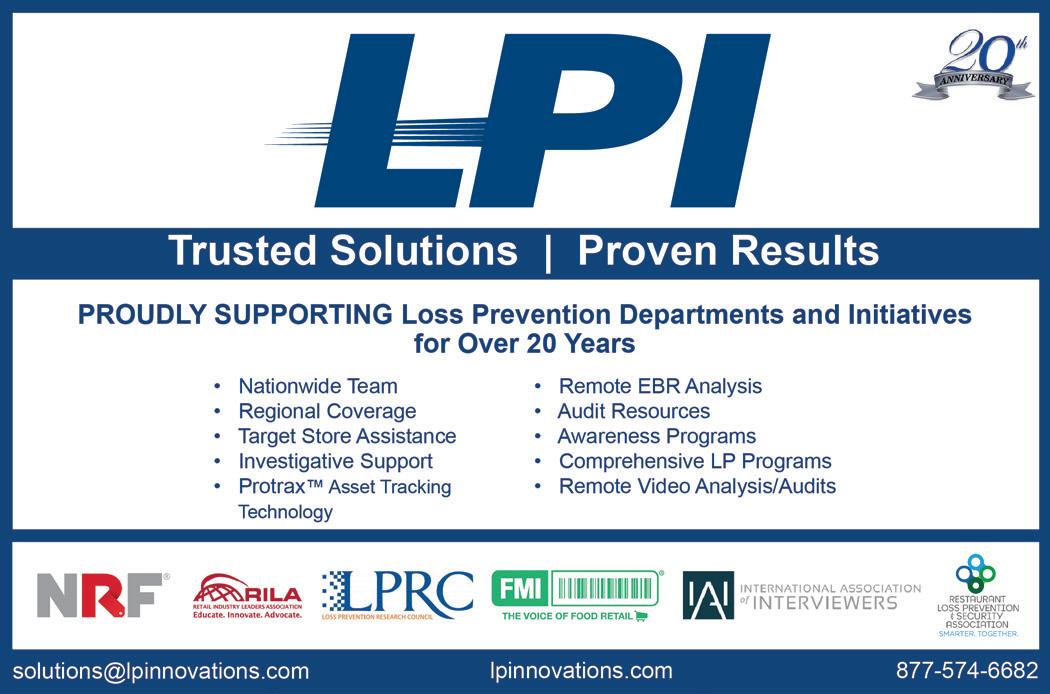
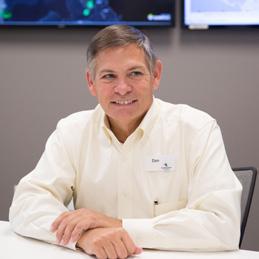
EDITOR: What accomplishment are you most proud of for yourself or your team?
FAKETTY: I’d reference the success I’ve had at hiring some really good people and putting them in positions where they can be successful, either here or elsewhere.
I’ve been extremely fortunate to have incredible teams throughout my career. Here are a few examples. Will England, who was my director of loss prevention, was recently promoted to vice president of LP for Weis Markets. A few weeks ago I learned that David Homolka, whom I hired and trained years ago at Shopko, moved from vice president of asset protection and human resource for Cabela’s and accepted a position with Duluth Trading Company where he’s
now the VP of HR. Mike Limauro, who I had hired and trained at Super Kmart Centers, recently joined Whole Foods as senior director of asset protection. Candidly, there are people I work with here that have the potential to become vice presidents of asset protection at some point in their future.
We have a really good team here, and I believe in promotion from within when we can. If you hire the right people and give them the resources to be successful, they will be. As much as I hate to see people leave, as long as they’re bettering themselves, it’s all good. FAKETTY: I have a director of asset protection operations, who manages the field from a traditional asset protection and safety standpoint. Within that structure, he has four regional directors that report to him. Under the regional directors we have asset protection district managers, and they support a territory or group of stores.
We align ourselves as best we can with our district operations managers. Our AP field team is responsible for executing all the strategies that are developed, and ultimately cascading it into stores. This group performs all the traditional AP roles including investigative work in the field. They also handle those seventy-four incident types that are identified and reported by our stores. Depending on the severity of the incident, they are our first responders.
While retail is changing at a dramatic pace, I wish there were more loss prevention executives changing with it. For whatever reason, we seem to hold on to our old-school thinking that the detection, apprehension, and prosecution of shoplifting suspects and associates involved in internal theft will hopefully keep us employed.
EDITOR: Speaking of people, let’s talk a little bit about the structure of your AP organization. If you would, summarize what your organization looks like.
I also have a senior director of food safety and audit who is responsible for our food safety program. The field audit team reports in through this area.
There is a senior manager of corporate safety, whose office is here in Jacksonville, and he has regional safety managers in the field.
I have a senior manager of pharmacy oversight and AP analytics. She runs our AP analytics center and is responsible for pharmacy oversight, which, as mentioned, is an important part of our added responsibility here. There’s also a business continuity manager and a senior manager of physical security, both of whom report directly to me.
EDITOR: You’ve been an active leader in the LP industry apart from your contributions to your company. Looking at the industry as a whole, what are your observations about the evolution of LP executives?
FAKETTY: First, while retail is changing at a dramatic pace, I wish there were more loss prevention executives changing with it. For whatever reason, we seem to hold on to our old-school thinking that the detection, apprehension, and prosecution of shoplifting suspects and associates involved in internal theft will hopefully keep us employed. Unfortunately, those that continue to follow that mindset and make it the staple of their entire programs I fear are missing out on opportunities to make their companies more profitable.
Additionally, absent strong metrics that support an ROI model for an asset protection department, it’s not if but when someone knocks on your door and asks, “What do you do for us?” This is especially true now due to mergers, acquisitions, replacement of CEOs, or when the dreaded consulting group is standing outside your office door. While not a popular position amongst my peers, I feel strongly that this is a contributor as to why some leaders in our industry have been replaced, asked to step down from their positions or, in some cases, causing entire asset protection departments to be eliminated.
EDITOR: As you’ve discussed earlier, you obviously believe that LP executives should take on added roles in their companies. Why do you believe that?
FAKETTY: I believe there are five reasons. First, I believe strongly that asset protection professionals can do it better. Second, done right, you will be able to produce a strong ROI, often with the same or perhaps even fewer resources. Third, you will add immediate credibility to your program and be looked upon as a problem solver. Fourth, you won’t need to self-promote within your organization because your
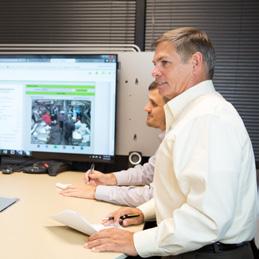
continued from page 32 executive leadership team will do that for you. Lastly, it protects you and your team from possible staff reductions or job loss.
EDITOR: That’s tremendous advice, Dan. Let’s turn our attention to the upcoming National Retail Federation’s PROTECT conference in June. You serve as the council chair. What does that role encompass?
FAKETTY: I don’t think most people understand just how large the conference has become over the past fifteen years. It’s the largest annual LP conference in North America with a solid track record for educational content. While at Harris Teeter and now here at Southeastern Grocers, I’ve been fortunate enough to receive the support of our CFO, whom I report to, who has allowed Southeastern Grocers to become an NRF member company. He has also been incredibly supportive as evident by him personally approving that I be able to take on the additional responsibility of NRF LP council chair.
My role is to provide leadership, make recommendations on issues that may be impacting our industry, and, more than anything, support the seven different committees within the loss prevention council. The seven committees include awards and recognition, legislative, education and research, diversity, women in LP, the investigative network, and content planning. The last committee works closely with NRF and makes recommends on education content for the conference, location, and even making recommendations for keynote speakers.
Throughout the year I am in touch with the vice chairs through meetings and conference calls where we discuss hot topics that are impacting our industry. I also support the committees to achieve their goals and objectives. All in all, it’s a great group of executives doing great work for the industry—all of whom volunteer their time. I’m proud I can be
part of it and flattered that our president and CFO support me in the role.
There has been a lot of conversation over the past few years about loss prevention programs being downgraded or even eliminated, based on changes in retail. I don’t believe that will be the case at all. If I could recommend anything to anyone in our business, it would be to look for nontraditional ways you or your department can enhance your company’s profitability, even if that means taking on what you may feel is not in your job description.
EDITOR: Where is the conference this year, and do you have any presentations you are especially looking forward to?
FAKETTY: The 2018 conference is at the Gaylord Texan Resort in Dallas on June 11 to 13. I’m very interested in hearing our keynote speaker, Marv Ellison, who started his career in loss prevention and is now chairman and CEO of JCPenney. He’s speaking on “managing through change and adversity,” which he’s certainly been living in the department store world.
With the recent impact of Hurricanes Irma and Harvey, we felt strongly that we needed sessions on disaster recovery and crisis management. We have several speakers talking about how to build a disaster recovery program and others who will talk about how they specifically handled those recent natural disasters.
We have presentations on cyber crime, which continues to be top of mind, not only with chief information officers but also in LP as it’s typically a big responsibility in our world.
There is also an interesting session called “Power Posse” with Melissa Mitchell on decoding nonverbal cues, which I’m really looking forward to.
EDITOR: Dan, we’ve talked about a lot of different things today. Is there anything that you would like to say to conclude our interview?
FAKETTY: There has been a lot of conversation over the past few years about loss prevention programs being downgraded or even eliminated, based on changes in retail. I don’t believe that will be the case at all. If I could recommend anything to anyone in our business, it would be to look for nontraditional ways you or your department can enhance your company’s profitability, even if that means taking on what you may feel is not in your job description. By taking on additional roles and measuring the impact consistently, you will put yourself and your department in good standing with your organization. There are some in our industry that shy away from this mindset, and I think that’s unfortunate.
While we will always be asked to show our impact on shrink, there is much more that we can do, and I feel we should embrace new roles and responsibilities, especially in this ever-changing retail environment. I think if more industry leaders thought this way, they could make an even larger impact in their companies’ success. This is not a dying profession as some have told me; it’s one that’s continually evolving, and it’s a very exciting time for loss prevention professionals, especially now.







